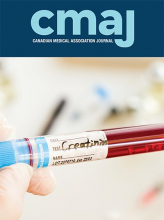Clinical evaluation of corneal foreign bodies includes lid eversion and fluorescein staining
Ocular trauma accounts for 8% of emergency department visits; of these, 31% involve corneal foreign bodies.1 A focused history includes presenting symptoms, type of foreign body, penetrability, entry velocity, duration since injury, concurrent contact lens usage and ocular history.1 Evaluation includes assessment of visual acuity, pupillary response and extraocular movements, and fluorescein staining. Vertical scratch marks that stain with fluorescein suggest a foreign body under the upper lid. In this case, the upper lid should be fully everted during examination.2 A Wood lamp has low sensitivity (52%) for fluorescein uptake compared with a slit lamp. Patients who continue to be symptomatic 24 hours after a negative Wood lamp examination should be re-examined in the emergency department or clinic.3
Clinicians should screen for penetrating injuries of the globe
It is important to rule out open-globe injuries, as these complicate some presentations of corneal foreign bodies.4 A penetrated globe can be identified if a green streak flows out from a fluorescein-soaked foreign body; however, the streak may be absent when penetrating injuries are self-sealing. If an intraocular foreign body is suspected, orbital computed tomography should be performed. Penetrating injuries require urgent referral to an ophthalmologist without displacing the foreign body.2
Experienced practitioners can remove some foreign bodies in the office or emergency department
If superficial, the foreign body can be irrigated with saline or, using topical anesthetic, carefully removed with a cotton-tipped applicator under direct visualization. If embedded, a trained physician can remove the foreign body using a slit lamp with a 25-gauge needle or spud.
Follow-up care includes oral analgesics and infection prevention
Clinicians should administer a tetanus booster, when indicated, and prescribe oral analgesics.2 Topical broad-spectrum antibiotics, with coverage against Pseudomonas species for patients who wear contact lenses, may prevent superinfection.1 Topical nonsteroidal anti-inflammatory drugs, steroids, cycloplegics and eye patching do not improve pain or healing.1,2,5
Some patients require referral to an ophthalmologist
Patients should be re-evaluated in 24 hours and referred to an ophthalmologist if symptoms persist or worsen. An ophthalmologist should also be consulted for difficult removals, deeply embedded foreign bodies, corneal ulcerations, hyphema, hypopyon or substantial changes in visual acuity.1,2
CMAJ invites submissions to “Five things to know about …” Submit manuscripts online at http://mc.manuscriptcentral.com/cmaj
Footnotes
Competing interests: None declared.
This article has been peer reviewed.
This is an Open Access article distributed in accordance with the terms of the Creative Commons Attribution (CC BY-NC-ND 4.0) licence, which permits use, distribution and reproduction in any medium, provided that the original publication is properly cited, the use is noncommercial (i.e., research or educational use), and no modifications or adaptations are made. See: https://creativecommons.org/licenses/by-nc-nd/4.0/











